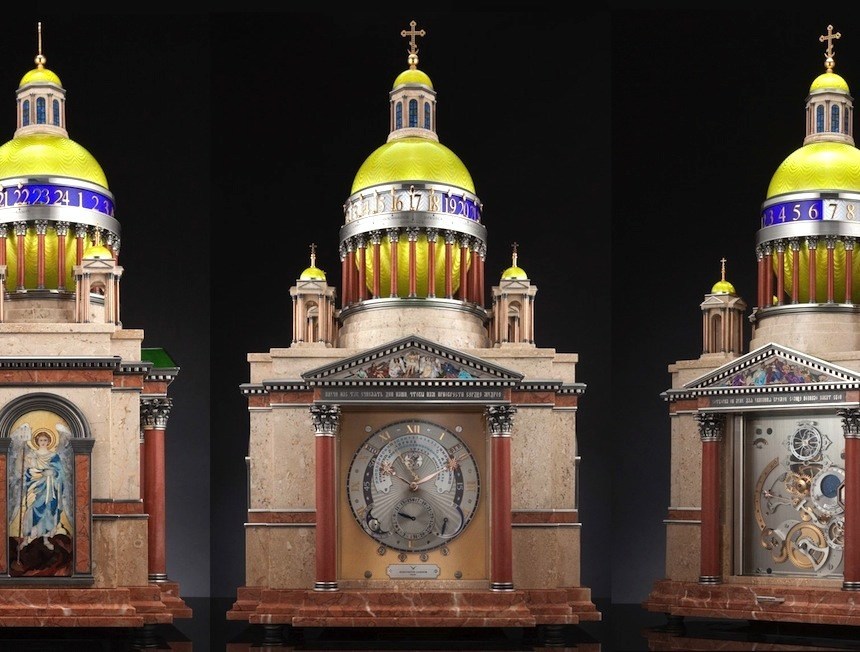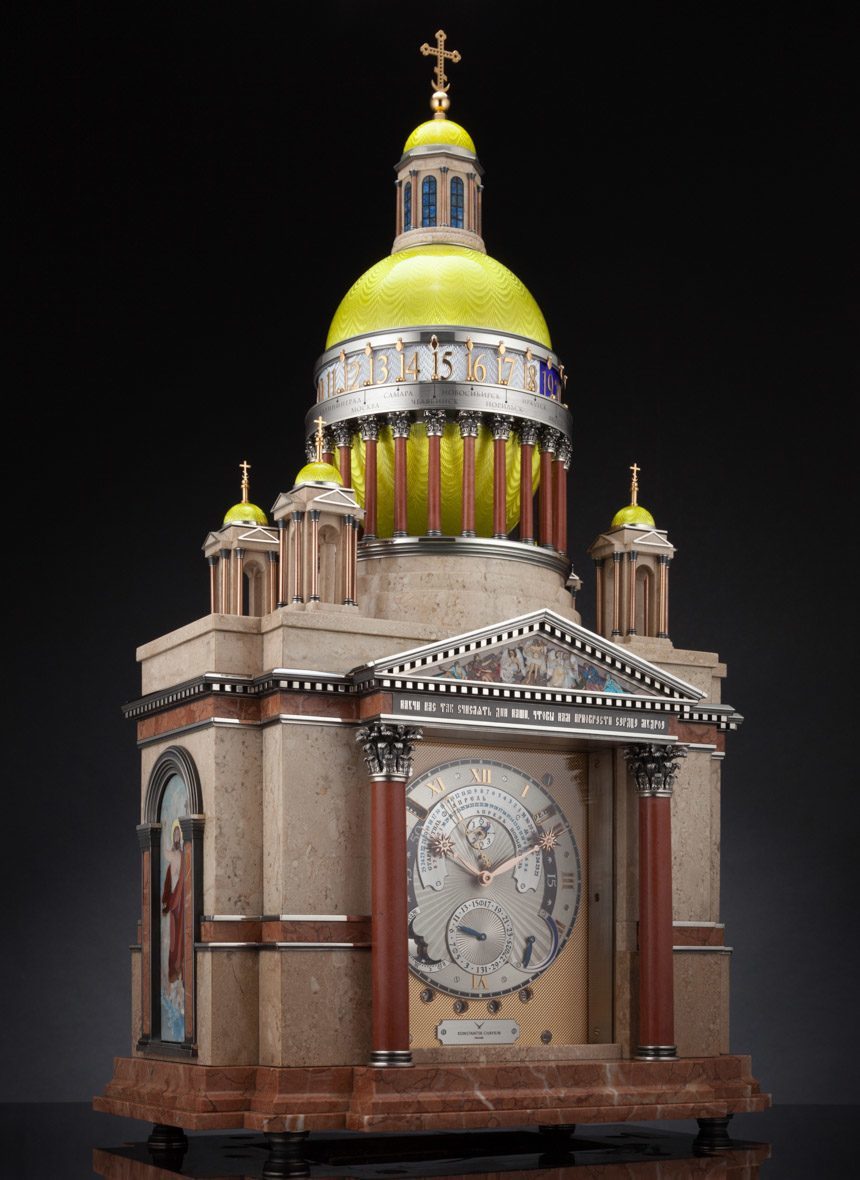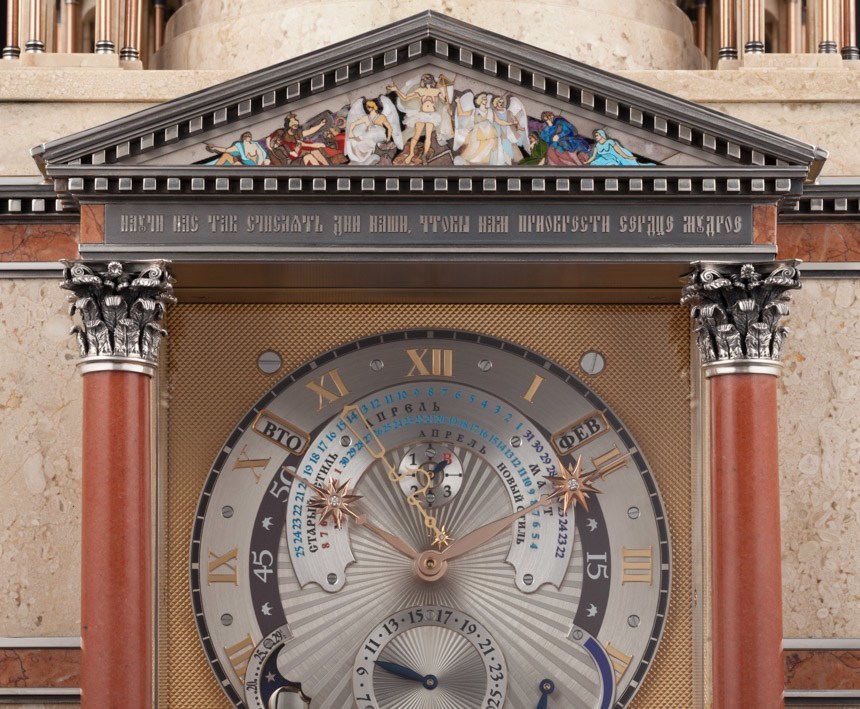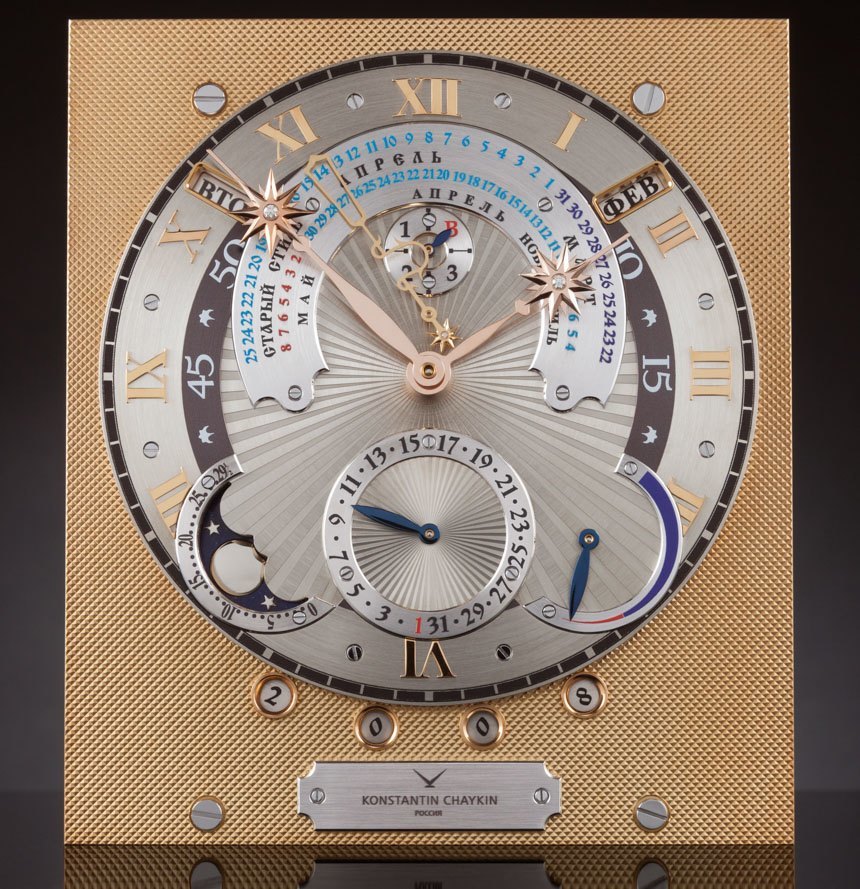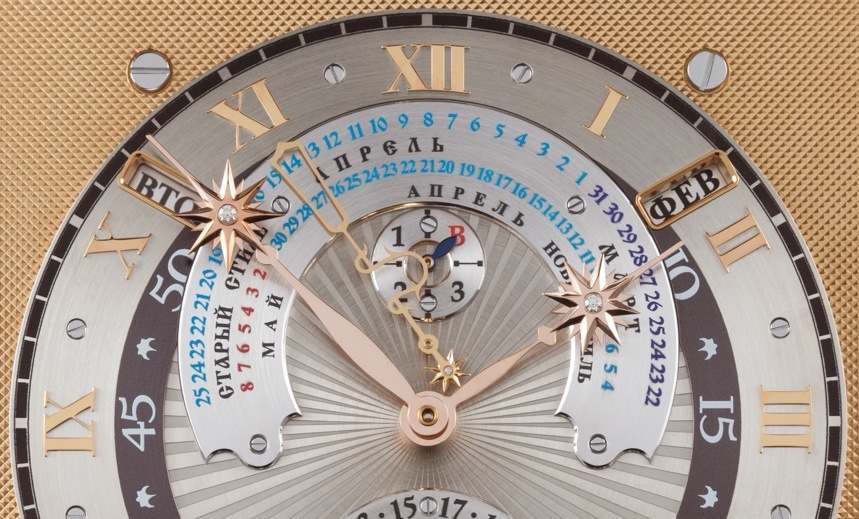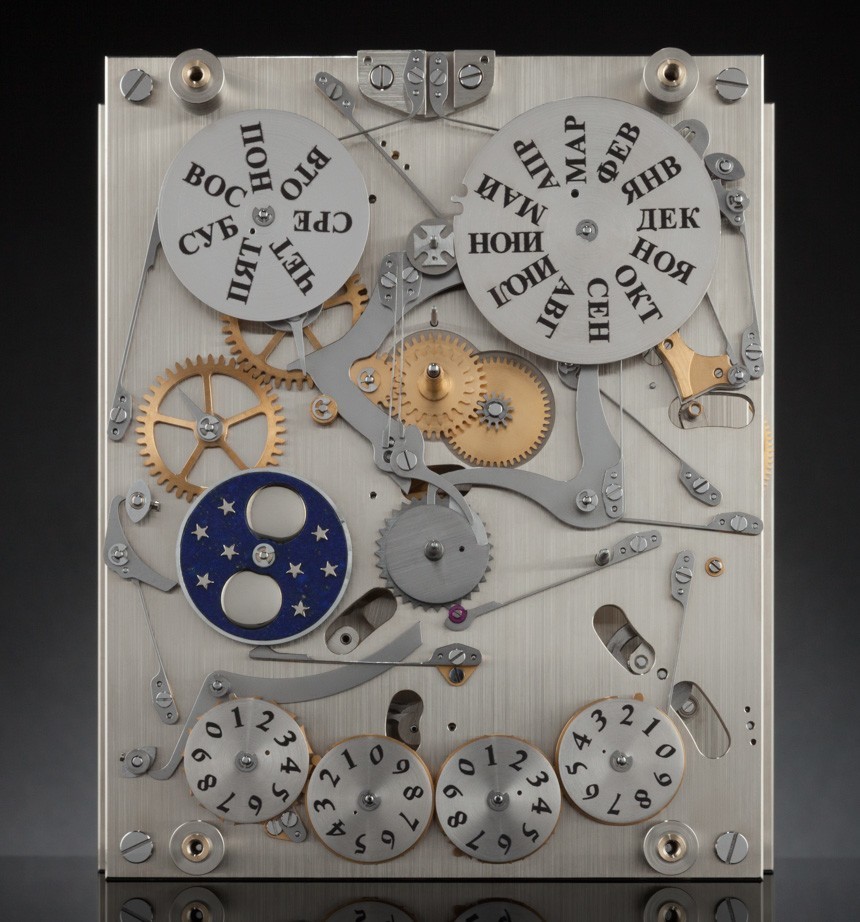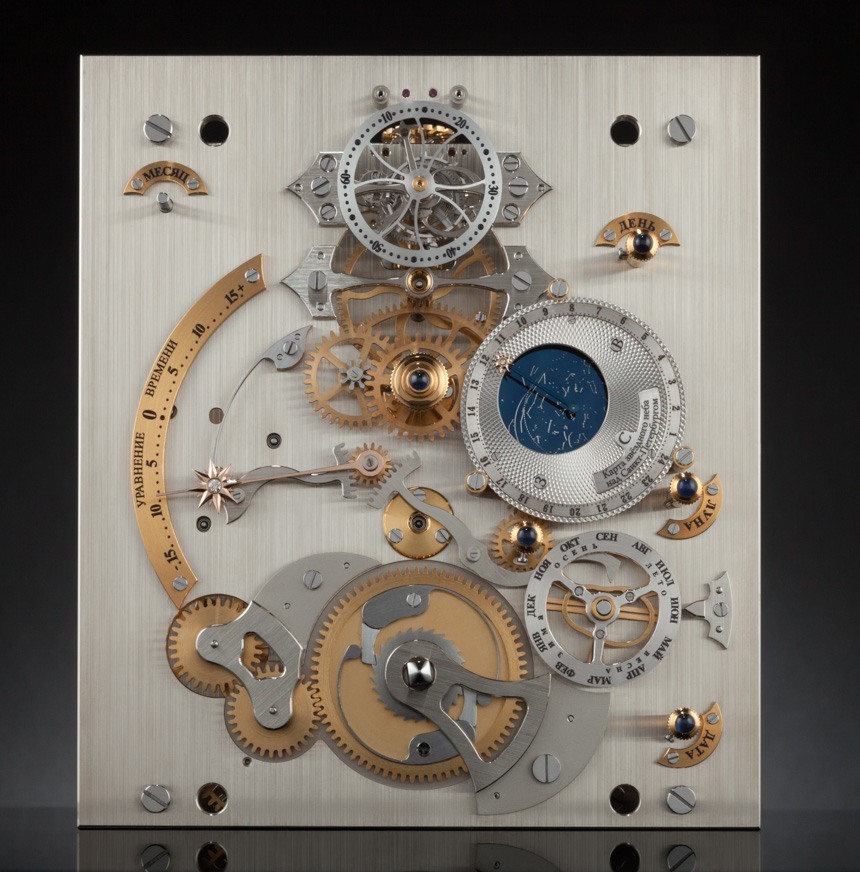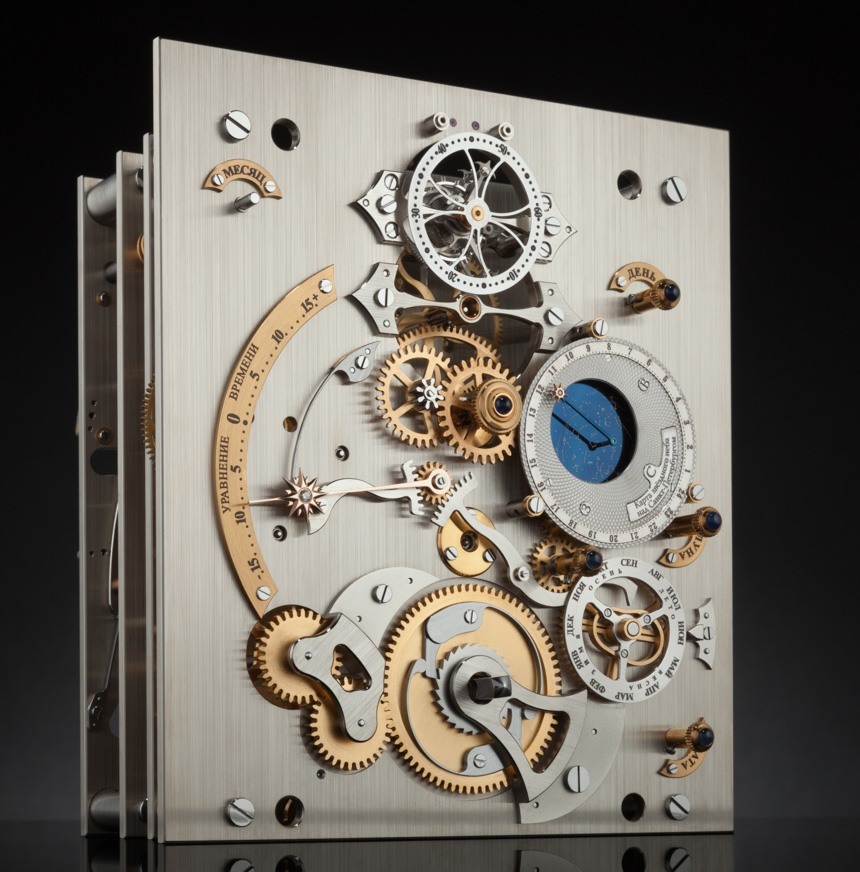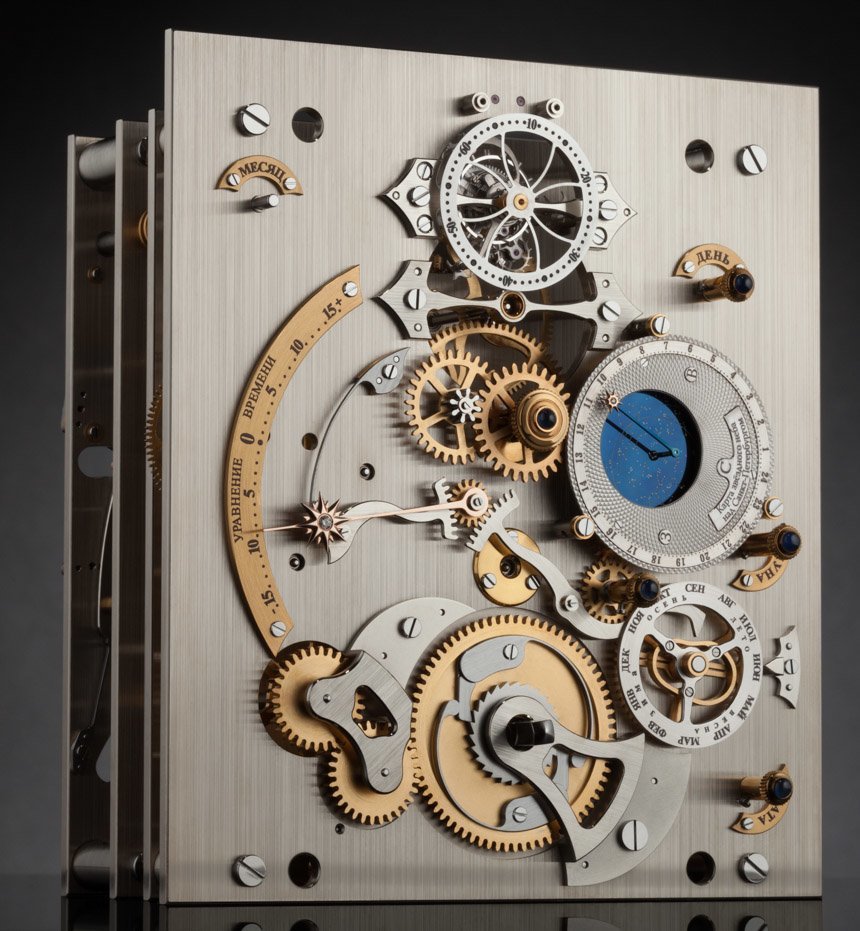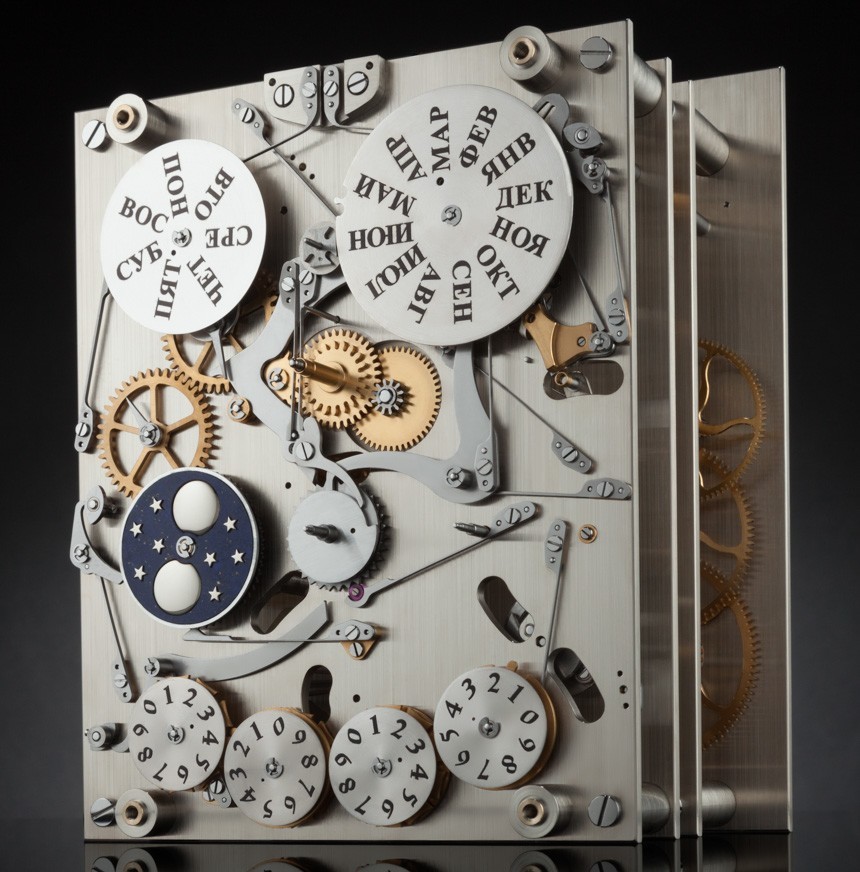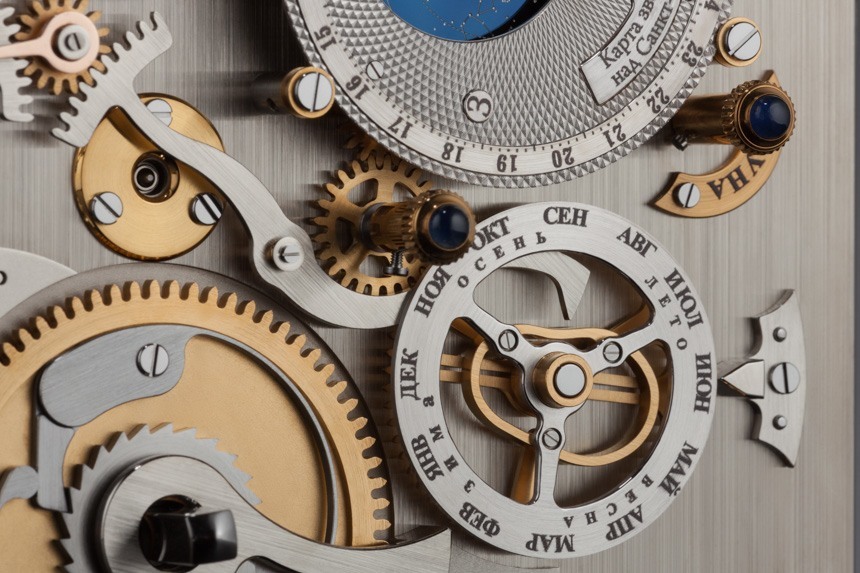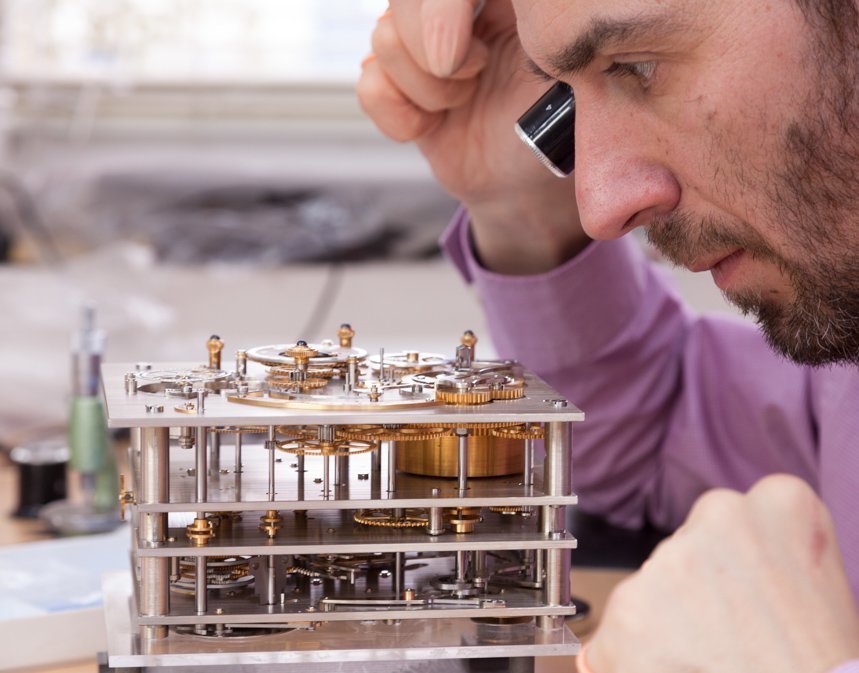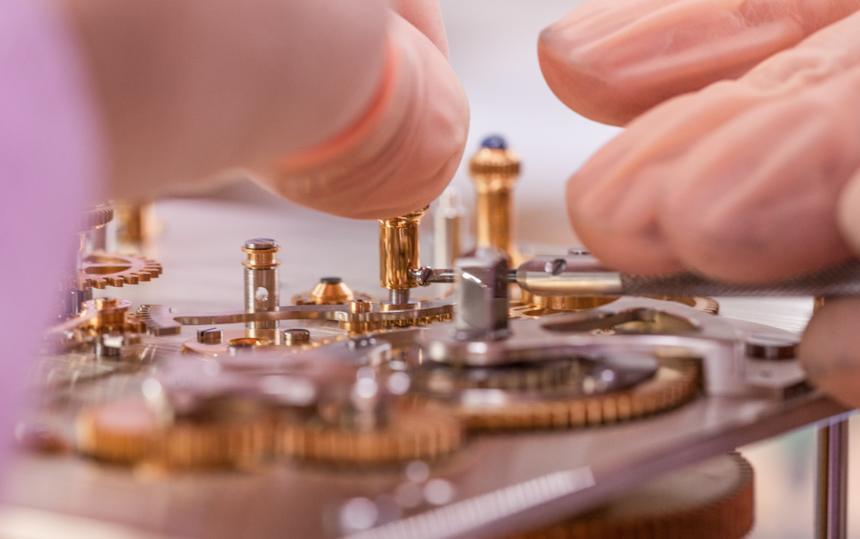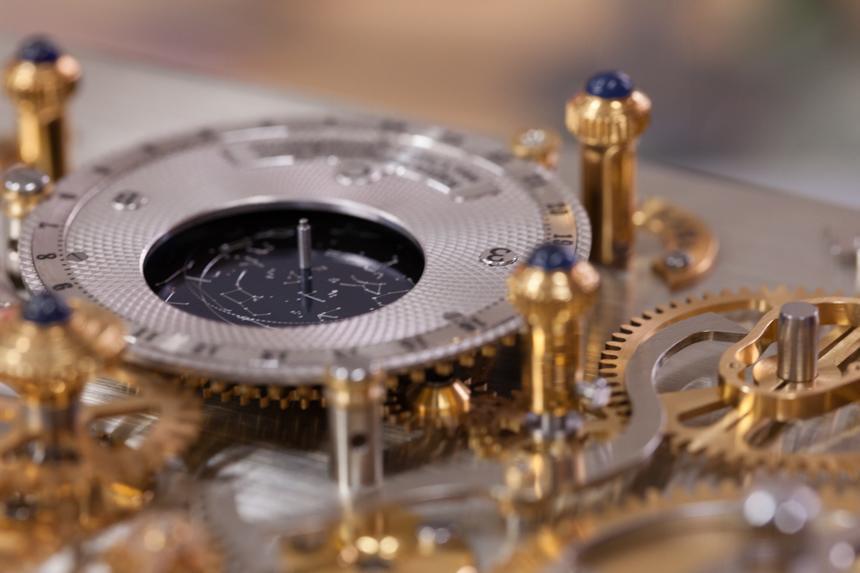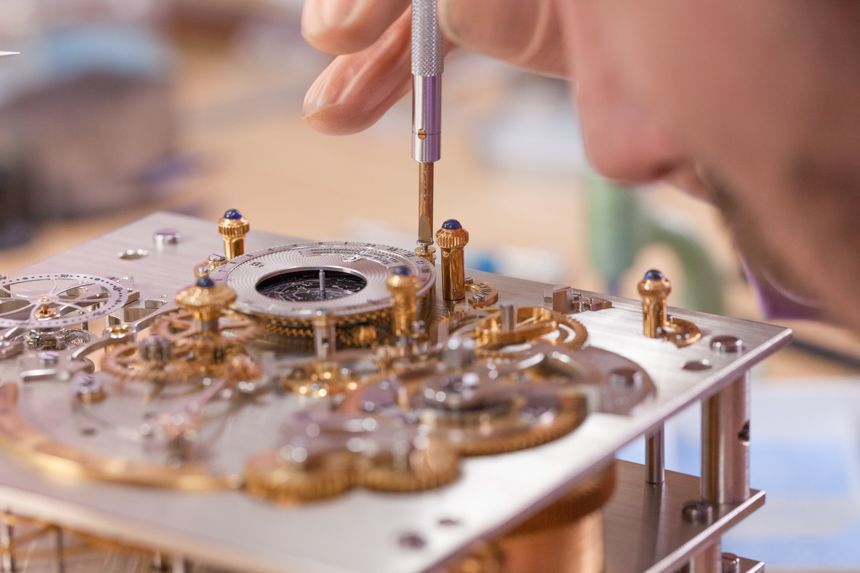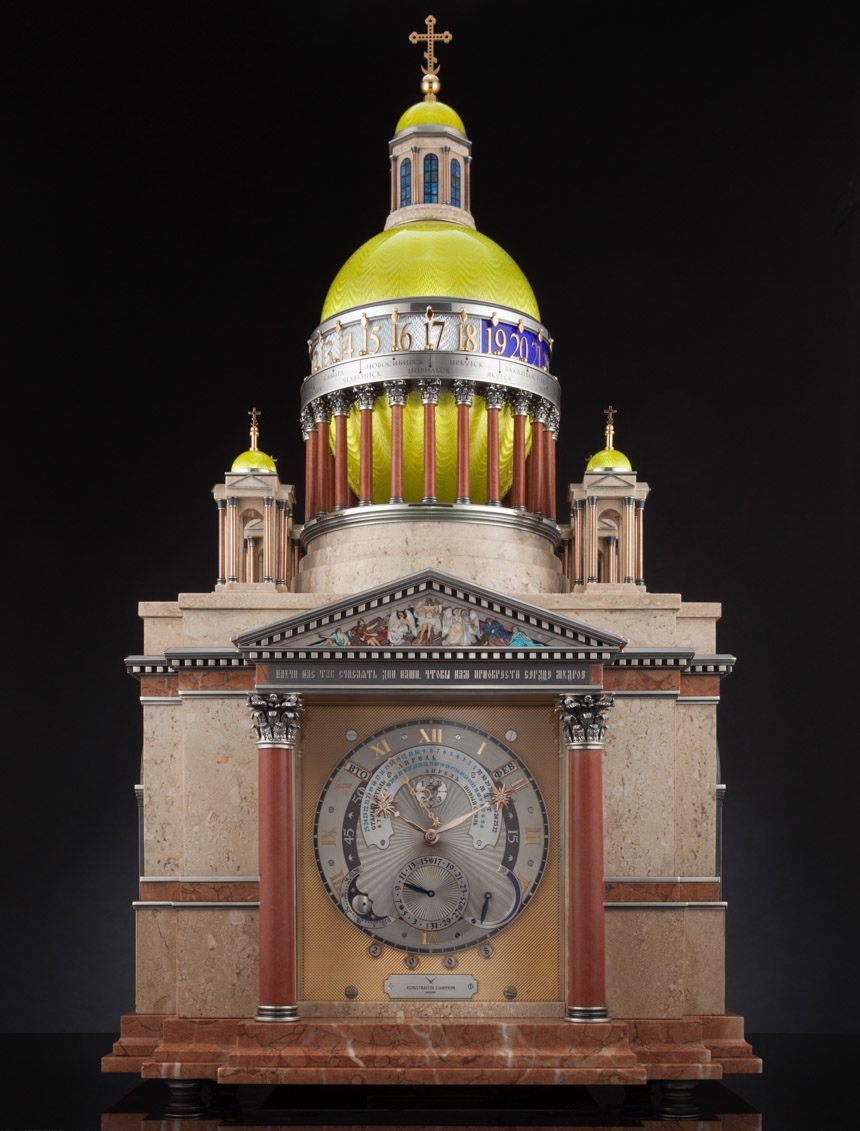
Comprising 1,375 individual components and standing some 60 centimeters (or about 23.5 inches) tall, the one-of-a-kind Konstantin Chaykin Computus Easter Clock certainly belongs among the most complicated clocks ever made – and is, in fact, the most complicated Russian clock, according to Chaykin. For the forty-year-old Russian watchmaker, religion, in all its forms, and particularly their different calendars and symbolism, is a genuine passion. This is reflected in his previous clocks and watches with Christian, Hebrew, and Muslim symbols and calendars.
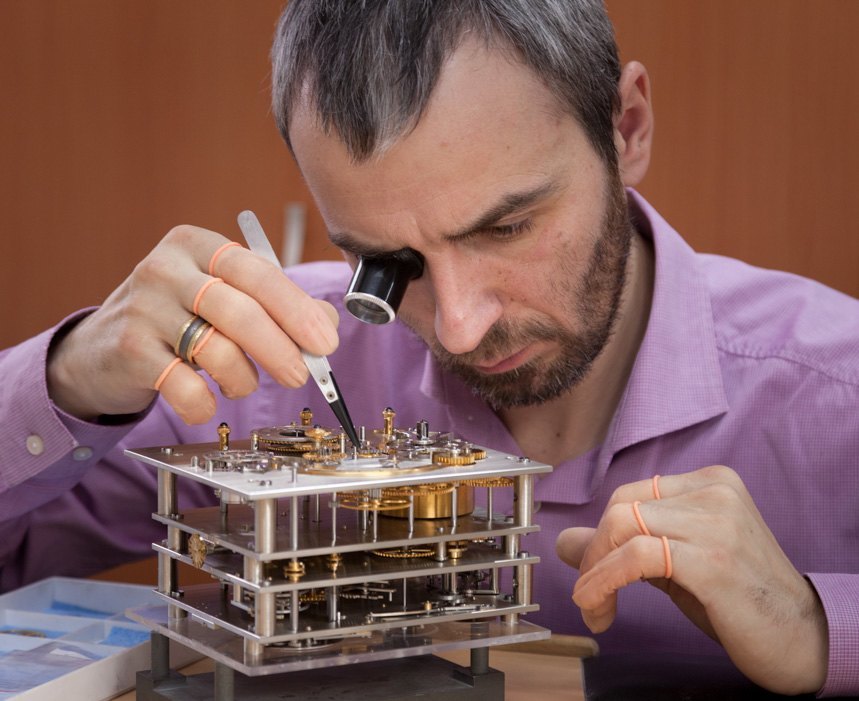
His approach is fascinating in that, to quote him on this sensitive matter: “I do not tie my creations with faith itself. I create timepieces related to religion because I am fascinated by the history of time-telling. There is a surprising amount of information about how mankind learned about time in all holy books. And creating timepieces to reflect this knowledge requires monumental research and work.” All that fantastic history would be worthy of a dedicated article – or a five-thousand page book, for that matter – but for now, let us concentrate on his latest creation.
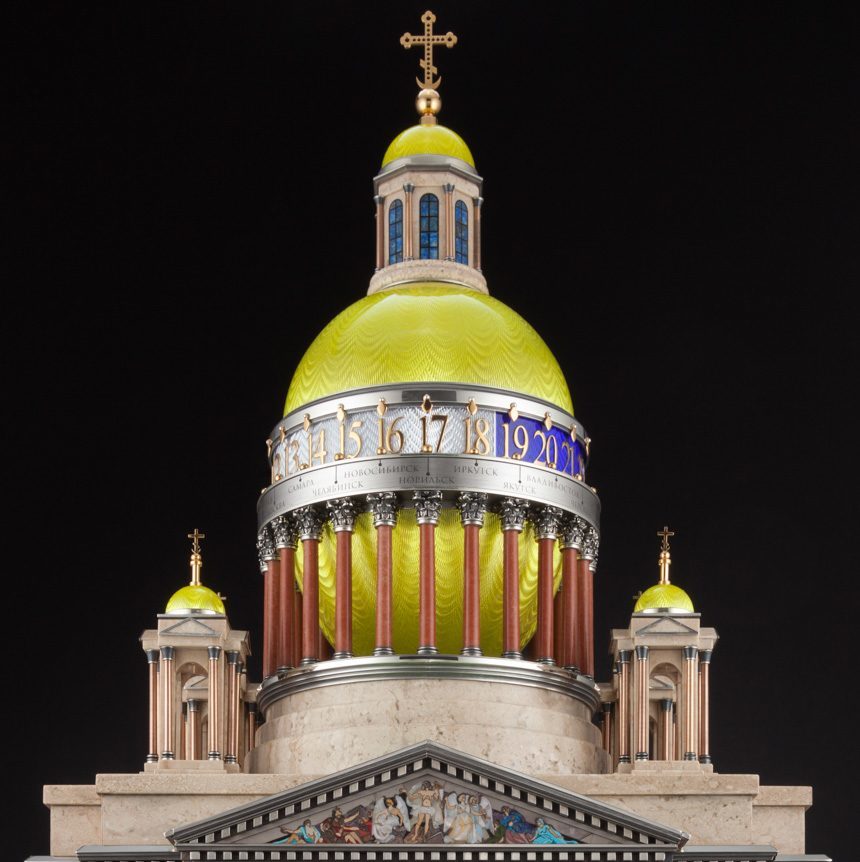
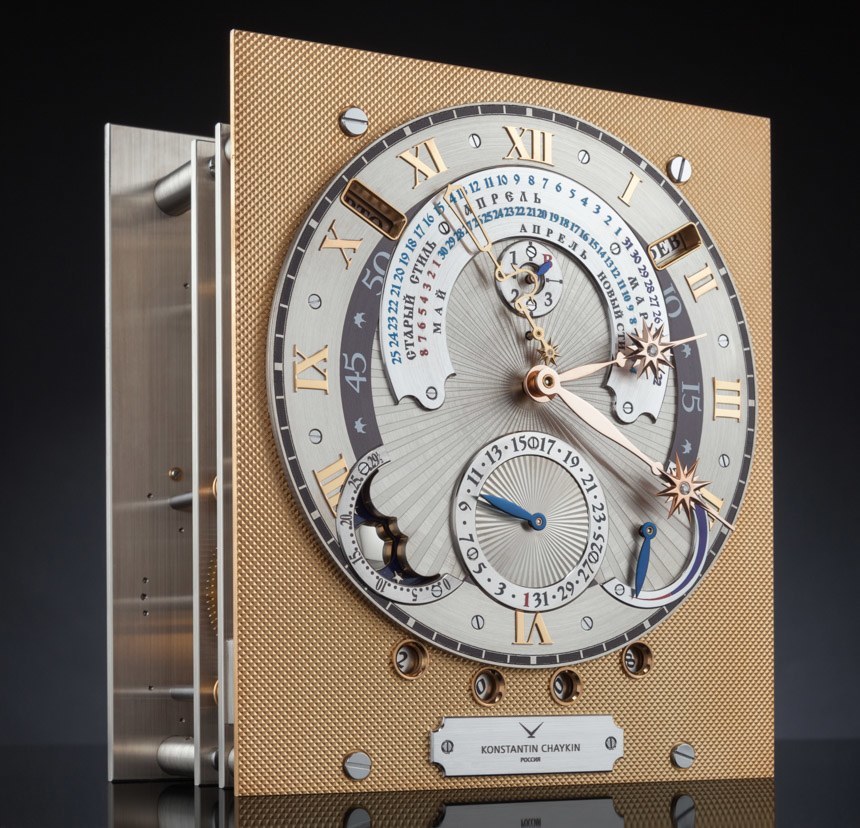
The Konstantin Chaykin Computus Easter clock, you guessed it, was designed to tackle the remarkable challenge of identifying the moving date of Eastern Orthodox Easter. Why is this moving date so extremely difficult to calculate? Well, because the determining factors include: lunar cycles, solar cycles, the epact, the solar correction, and more. Chaykin learned how to use all of these factors and created his own method for doing the computations, only to then teach his clock how to compute the dates for Eastern Orthodox Easter. Among a myriad other functions that we’ll list soon, this is the centerpiece of this remarkable structure, crafted from marble, brass, silver, steel, duralumin, glass, gold, lapis lazuli, and more.
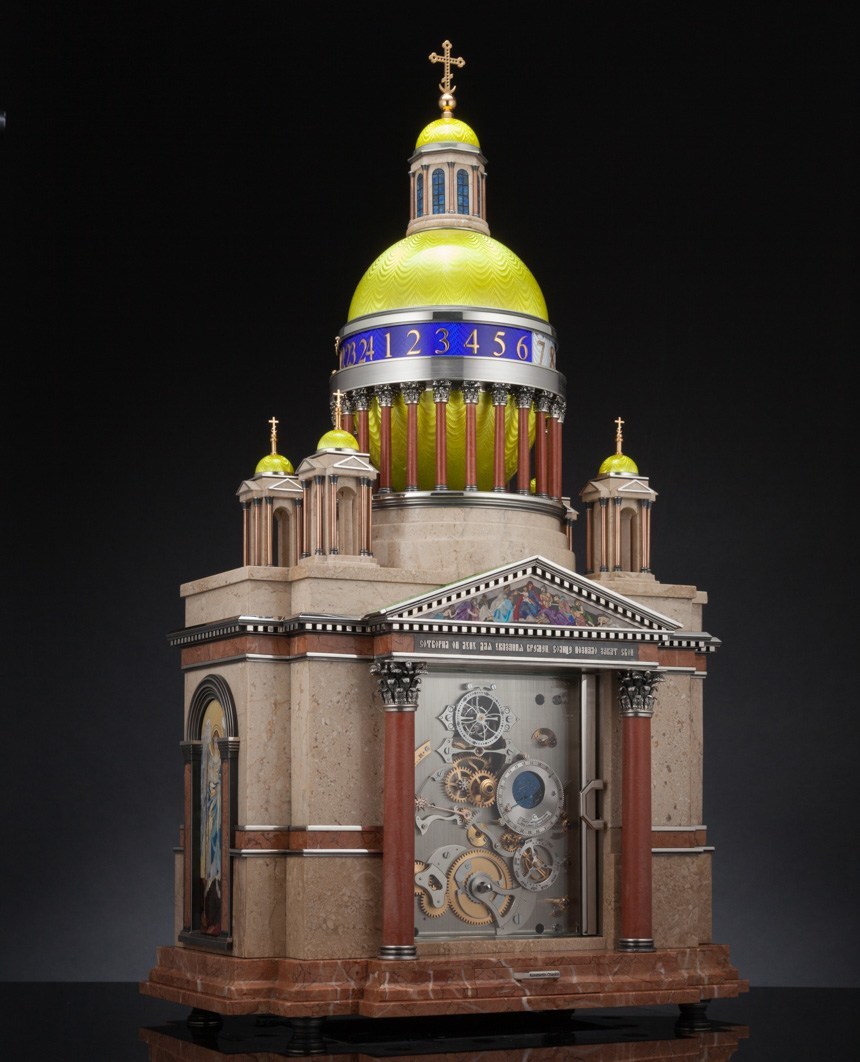
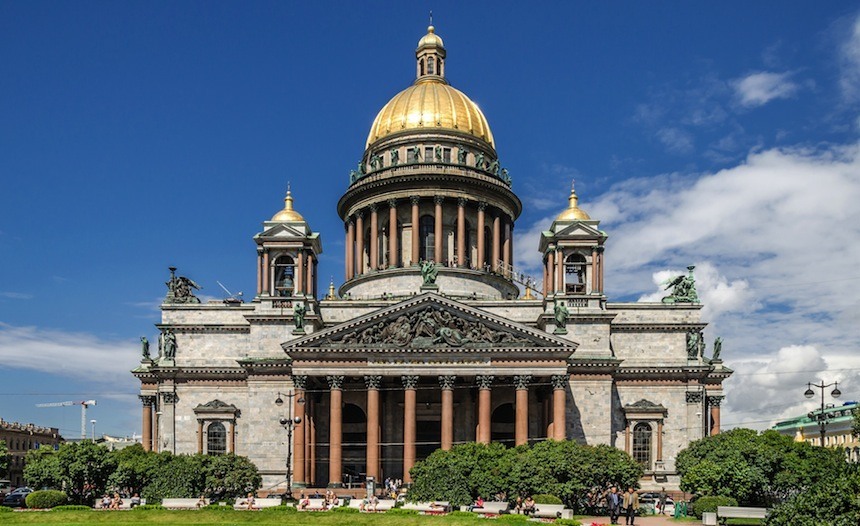
The case of the Konstantin Chaykin Computus Easter clock is designed to mimic the St. Isaac Cathedral of St. Petersburg, Russia, with the overall shape, the dome, the colonnade, the bell towers, and even the colors all having been picked to match this monumental cathedral. On top is a dome decorated with guilloche and gold enamel, melded into an egg shape to match the symbol of Resurrection for Christians. The four miniature bell towers, the 24 columns, the mosaic decorations on the sides of the structure, and all other minuscule design elements have been conceived and crafted to match the original building.
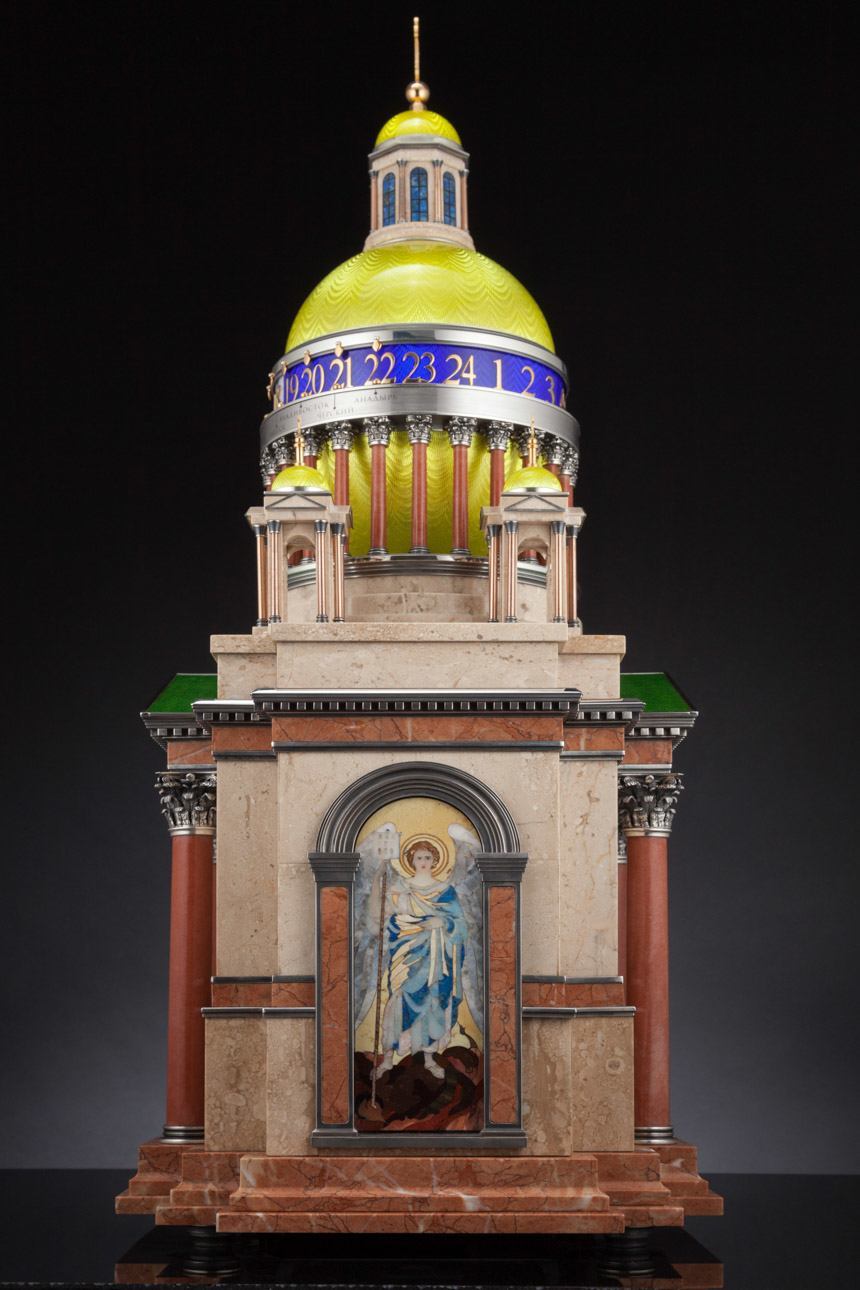
The full dimensions of the case are 600 by 340 by 242 millimeters (about 23.5 by 13.5 by 9.5 inches). That is, without a shadow of a doubt, massive, and yet it also means that the decorations, including mosaics with the image of Archangel Michael and the “Risen Christ” in jasper, jade, lapis lazuli, violan, and sandstone truly are microscopic creations that must have required painstaking work to realize with such detail.
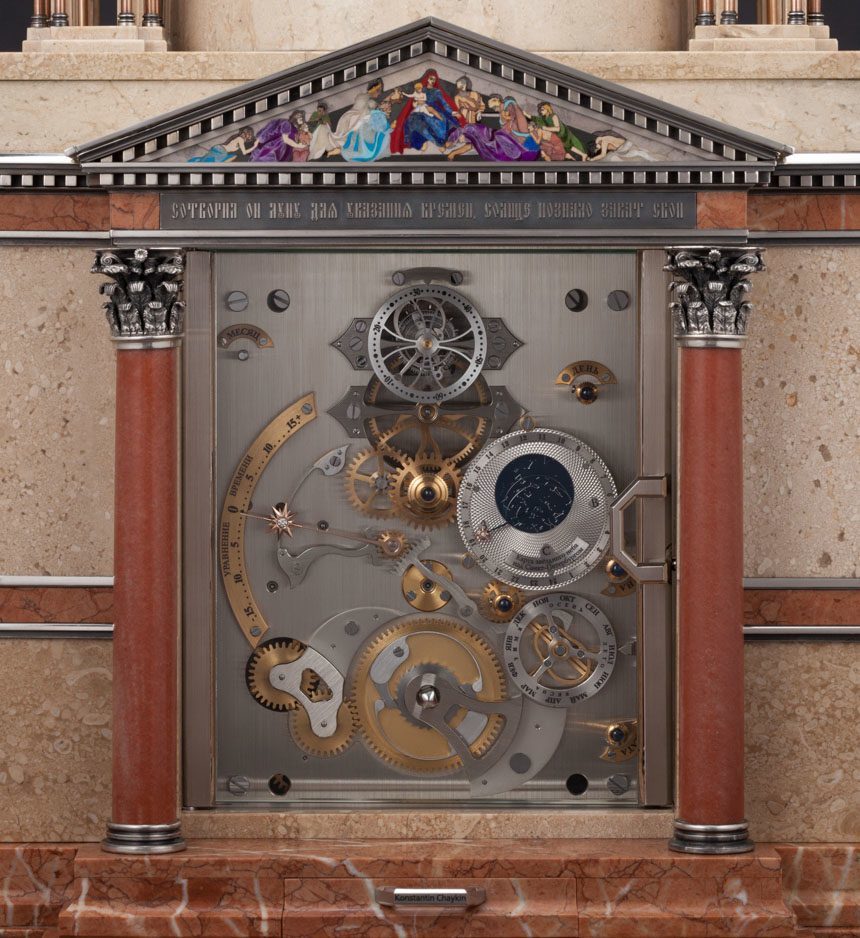

It isn’t just about the details and monumental casing of the Konstantin Chaykin Computus Easter clock that amazes: the movement took over 10,000 hours of hand labor to create, comprising 1,375 parts, 16 jewels, 68 bearings, a power reserve of up to 10 days, a one-minute tourbillon that runs at 18,000 vibrations per hour, and a total of 16 time-telling indications. These include: Hours-minutes-seconds, Date of Orthodox Easter, Phases of the Moon, Equation of Time, Star Chart, Sidereal Time, Russian Time Zones, Seasons, Perpetual Calendar with day, date, month, year, leap year – and topping it all off is a power reserve display, because you really wouldn’t want to let this movement wind down and have to reset all the indications.
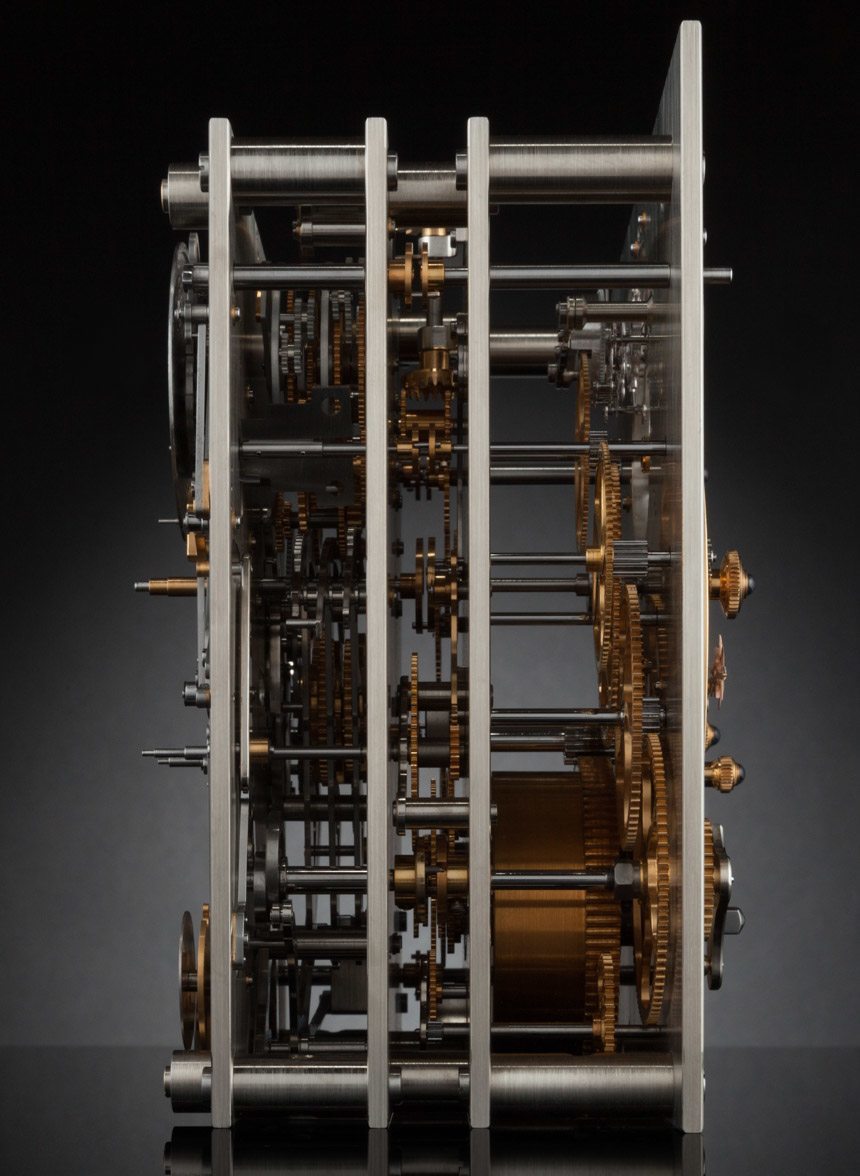
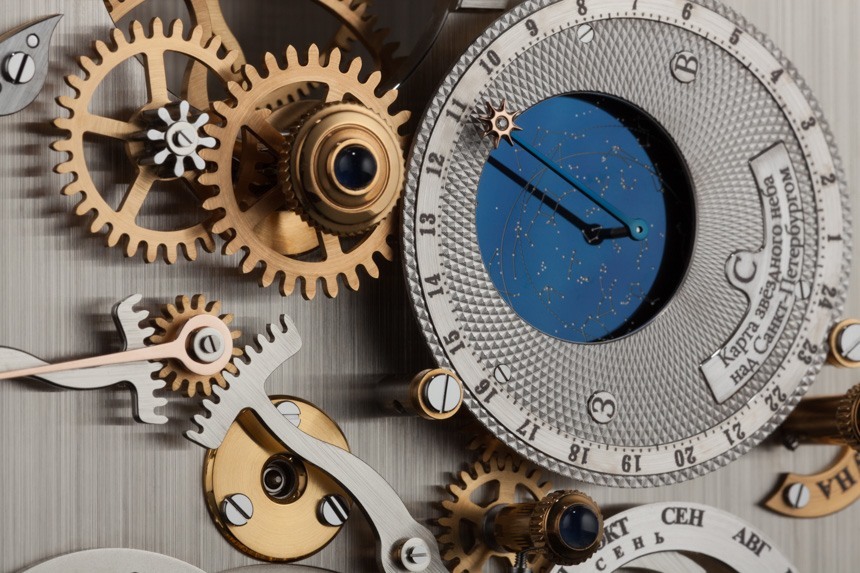
The last two or so decades have given watch lovers several dozen mind-boggling “grande complication” wrist watches with hundreds and often over a thousand components, dozens of indications and functions and, of course, truly top-notch finishing decorations. On the other hand, during this time, clocks from MB&F, Miki Eleta, Konstantin Chaykin, and a few others have stirred up the minds and hearts of those appreciative of finely made, highly complicated clocks, but there have been much fewer new iterations of such pinnacles of horology.
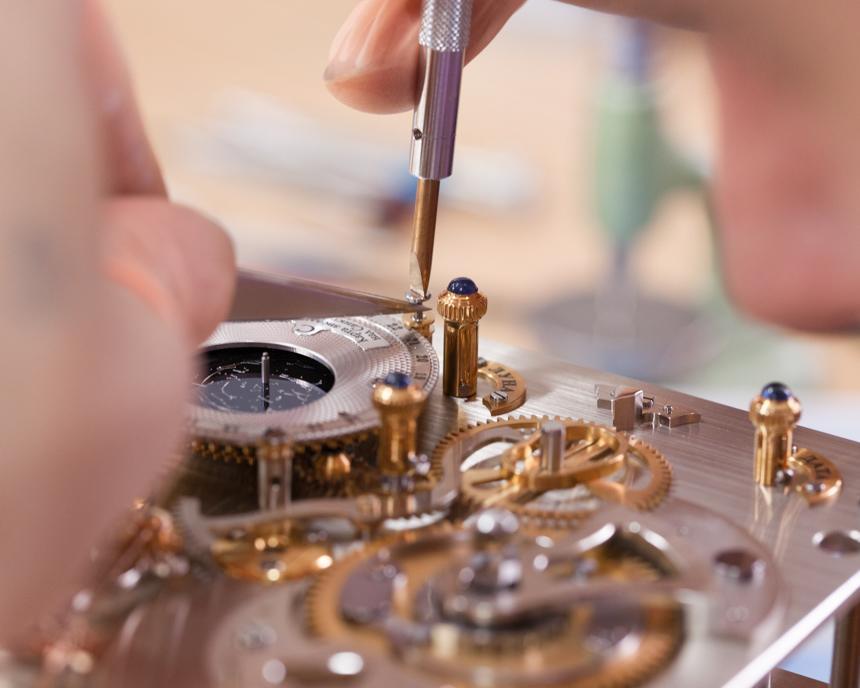
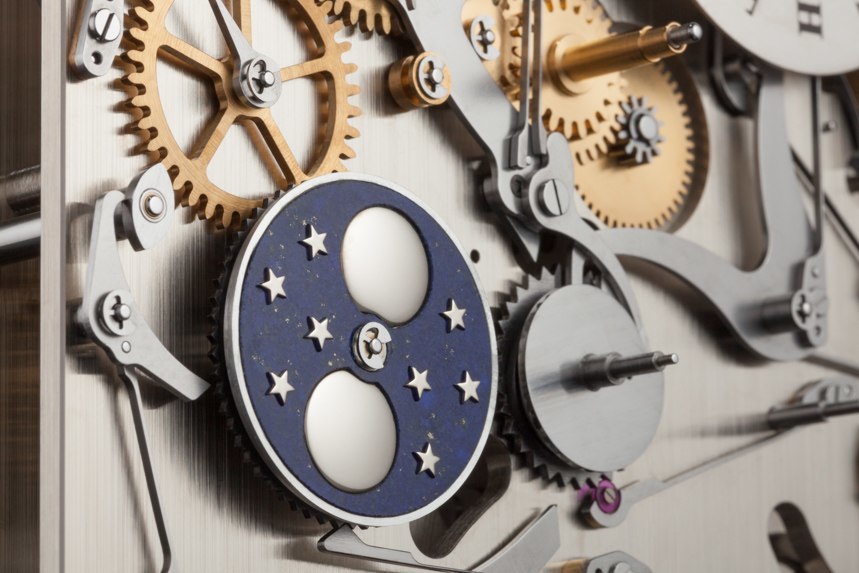
That, I must say, is not how it should be. Creations such as those we linked to just above, and of course ones of the caliber of this Konstantin Chaykin Computus Easter clock work as some of the most mesmerizing showcases of everything beautiful that fine watchmaking has to offer – only one can see and hence appreciate such details much more easily. Despite the whopping 1,300 plus component count, some of the cams, levers, gears and indications are naturally larger than their microscopic counterparts used in wrist watch calibers, giving those privileged to scrutinize such wonderful items up close a much better chance to appreciate how such fine mechanics function and see up close the fine and fascinating differences between finishing techniques.
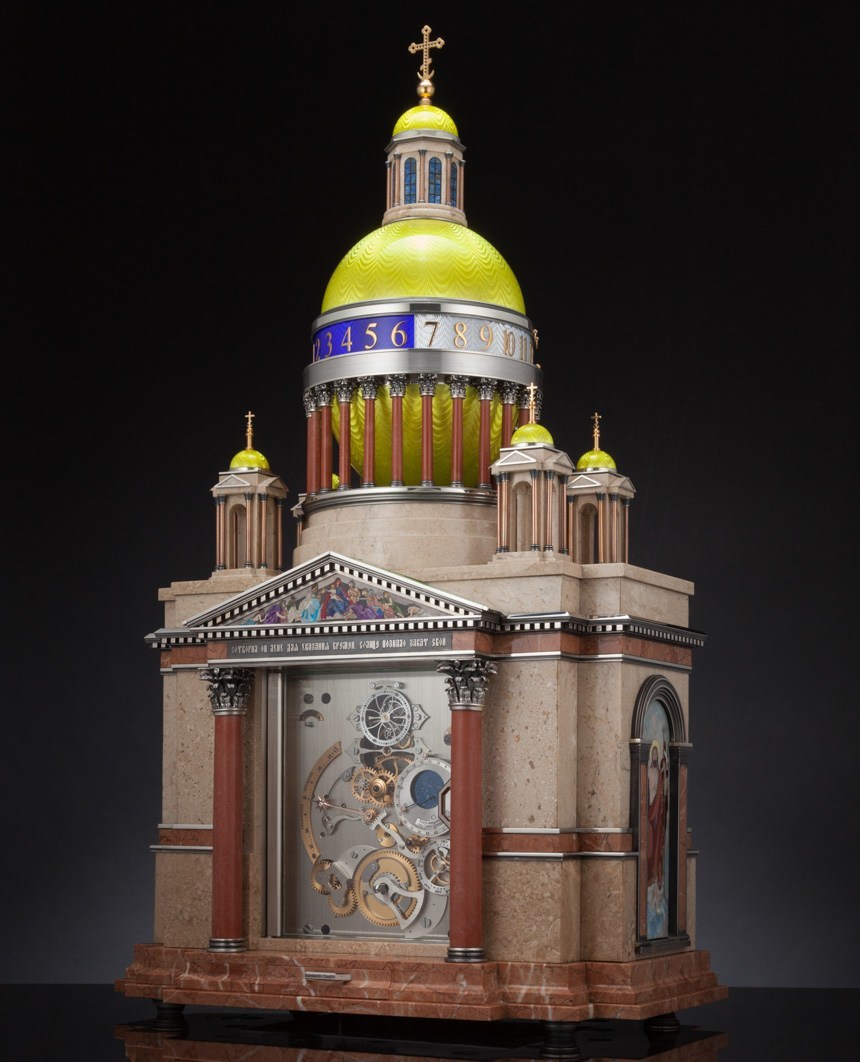
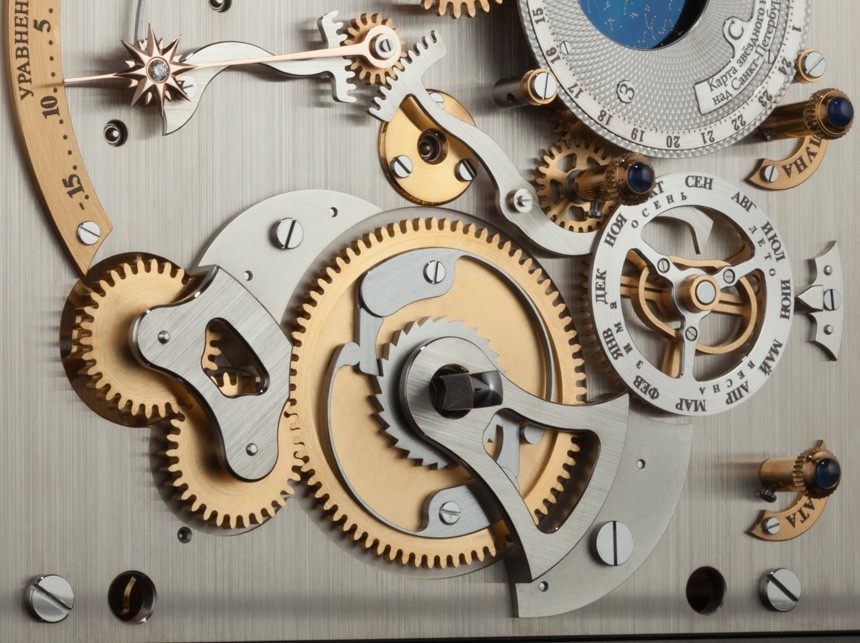
When it comes to remarkably gifted watch and clock makers like Chaykin himself and a few of his colleagues, this means that when they are commissioned to create such a clock (or even a pocket watch), they have a lot more room to work with, and that allows them to conceive more complicated movements and finish larger areas of metal with guilloche, enamel, and other traditional techniques – rendering such pieces so incredible to look at.
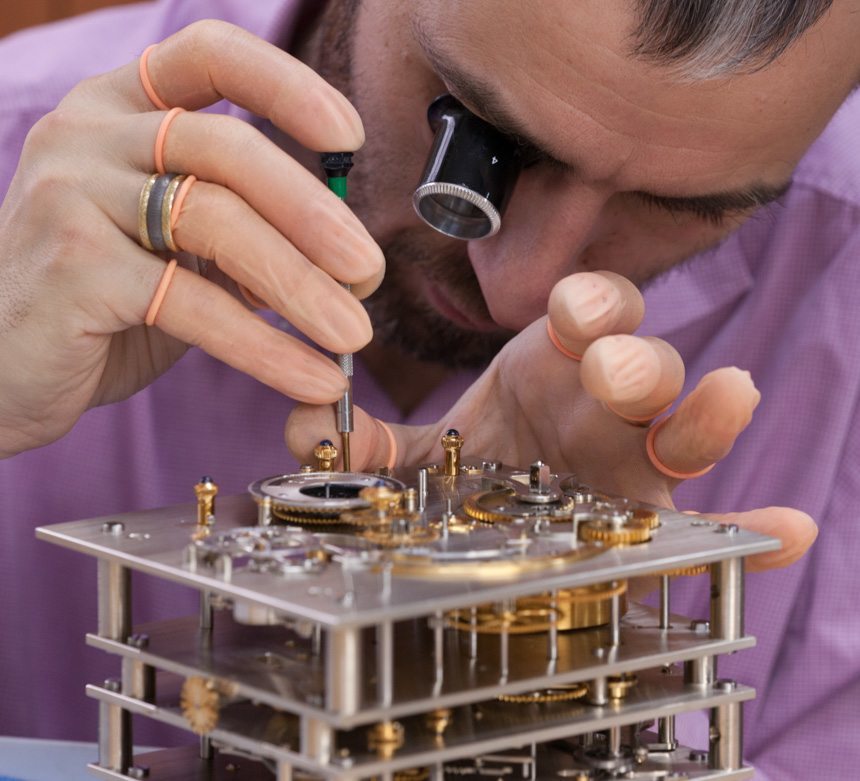
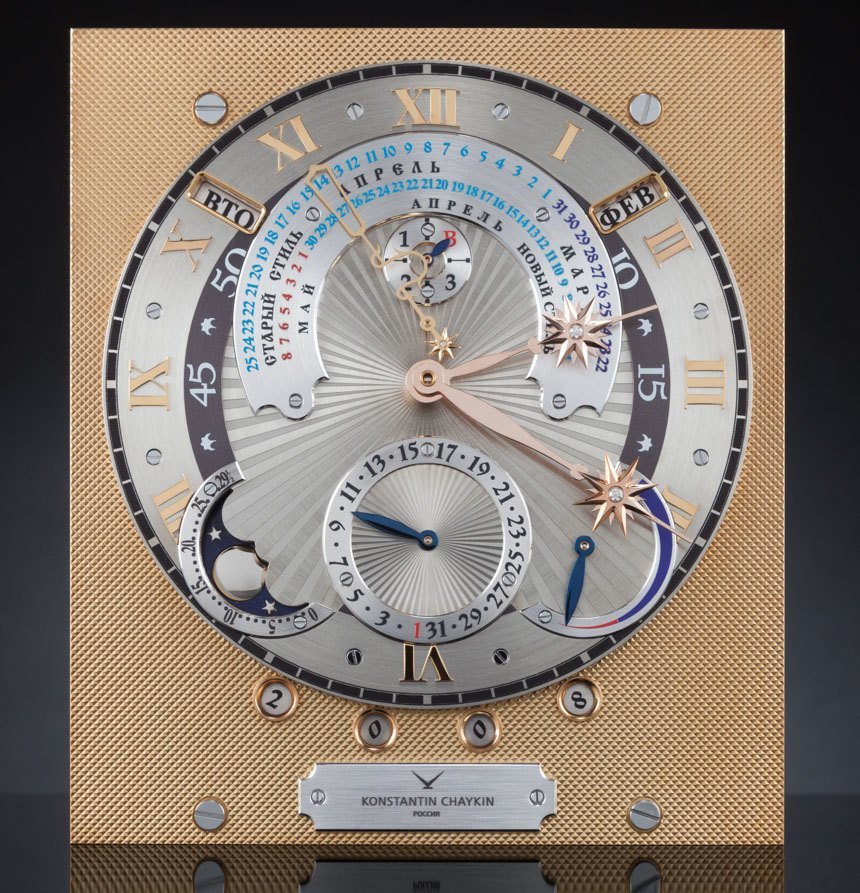
Sure, this particular clock does its job rather well at replicating the overwhelming nature of the humongous, lavishly decorated cathedral in St. Petersburg – but there are plenty of fine details both in the case and the movement, that make me want to gaze at the images even longer. Price for such a complex creation that uses such precious materials and takes so long to manufacture will be through the roof and indeed the stratosphere, with the Chaykin’s estimate for similarly complicated pieces like the Konstantin Chaykin Computus Easter Clock being around $750,000. konstantin-chaykin.com

